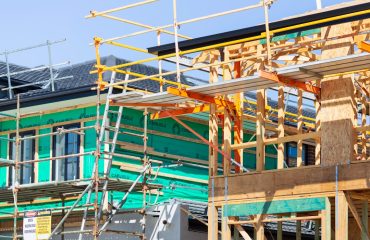body { font-family: sans-serif; line-height: 1.6; }
h1, h2, h3 { color: #333; }
img { max-width: 100%; height: auto; }
In the ever-evolving landscape of construction and engineering, the demand for energy-efficient building materials is paramount. Thermally insulated steel profiles have emerged as a leading solution, offering a compelling blend of strength, durability, and exceptional thermal performance. This comprehensive guide delves into the intricacies of these innovative profiles, exploring their benefits, applications, and future prospects.
Understanding the Composition of Thermally Insulated Steel Profiles
Thermally insulated steel profiles are composite materials, cleverly combining the inherent strength of steel with the insulating properties of a thermal break. The thermal break is typically a non-metallic material, such as polyamide (PA66), polyurethane (PU), or fiberglass reinforced polymer (FRP), strategically positioned within the steel profile to interrupt the flow of heat. This core material acts as a barrier, significantly reducing thermal conductivity and preventing heat transfer between the inner and outer steel sections. The choice of thermal break material depends on the required thermal performance and application-specific demands. For instance, polyamide is known for its high strength and dimensional stability, while polyurethane offers excellent insulation properties. The precise manufacturing process, involving precise injection molding or other techniques, ensures a robust and reliable bond between the steel and the insulating core.
Superior Thermal Performance: Minimizing Heat Transfer
The primary advantage of thermally insulated steel profiles lies in their significantly reduced thermal conductivity compared to conventional steel profiles. This translates to lower energy consumption for heating and cooling buildings. The thermal break effectively minimizes heat transfer, preventing the “cold bridging” effect that often occurs in steel structures. Cold bridging is the transfer of heat through conductive pathways like steel, leading to energy loss and discomfort. By interrupting these pathways, thermally insulated profiles maintain a more consistent internal temperature, reducing the load on HVAC systems and ultimately lowering energy bills. The thermal performance is often quantified using the U-value (or sometimes the R-value in some regions), which represents the rate of heat transfer. Lower U-values indicate better insulation and improved energy efficiency.
Diverse Applications Across Various Industries
The versatility of thermally insulated steel profiles makes them suitable for a wide range of applications. In the construction industry, they are extensively used in curtain walls, windows, doors, and facades of buildings. Their strength and durability ensure structural integrity, while their excellent thermal performance contributes to energy-efficient building design. Beyond buildings, these profiles find applications in industrial settings, such as refrigerated transport containers, where maintaining consistent temperatures is crucial. They are also increasingly used in renewable energy applications, for example, in the construction of solar panel mounting structures, where minimizing heat transfer can improve overall system efficiency.
Manufacturing Process: Precision and Quality Control
The manufacturing process for thermally insulated steel profiles involves several critical steps to ensure high quality and consistent performance. It typically begins with the fabrication of the steel sections using processes like rolling or extrusion. The thermal break material is then precisely injected or inserted into the steel sections, ensuring complete contact and a strong bond. This often involves specialized machinery and strict quality control measures to guarantee the integrity of the insulation and the overall structural strength. The final profile undergoes rigorous testing to verify its thermal performance and compliance with relevant industry standards. Advanced techniques like laser welding and automated processes are often employed to enhance efficiency and precision during manufacturing.
Future Trends and Innovations in Thermally Insulated Steel Profiles
The field of thermally insulated steel profiles is constantly evolving, driven by the increasing demand for sustainable and energy-efficient building materials. Future trends include the development of even more advanced thermal break materials with enhanced insulation properties and improved durability. Research is also focused on optimizing the design and geometry of the profiles to further minimize heat transfer. The integration of smart technologies, such as sensors and embedded heating/cooling systems, could further enhance the performance and energy efficiency of these profiles. Moreover, the use of recycled materials in the manufacturing process is gaining traction, aligning with broader sustainability goals. The industry is also exploring the use of bio-based materials for the thermal break to reduce the environmental impact of production.
In conclusion, thermally insulated steel profiles represent a significant advancement in building technology, offering a powerful combination of strength, durability, and energy efficiency. Their diverse applications and continuous innovation ensure their crucial role in creating sustainable and comfortable built environments for years to come.
SEO Tags:
- Thermally insulated steel profiles
- Energy efficient steel profiles
- Steel profile insulation
- Thermal break steel profiles
- Sustainable building materials




